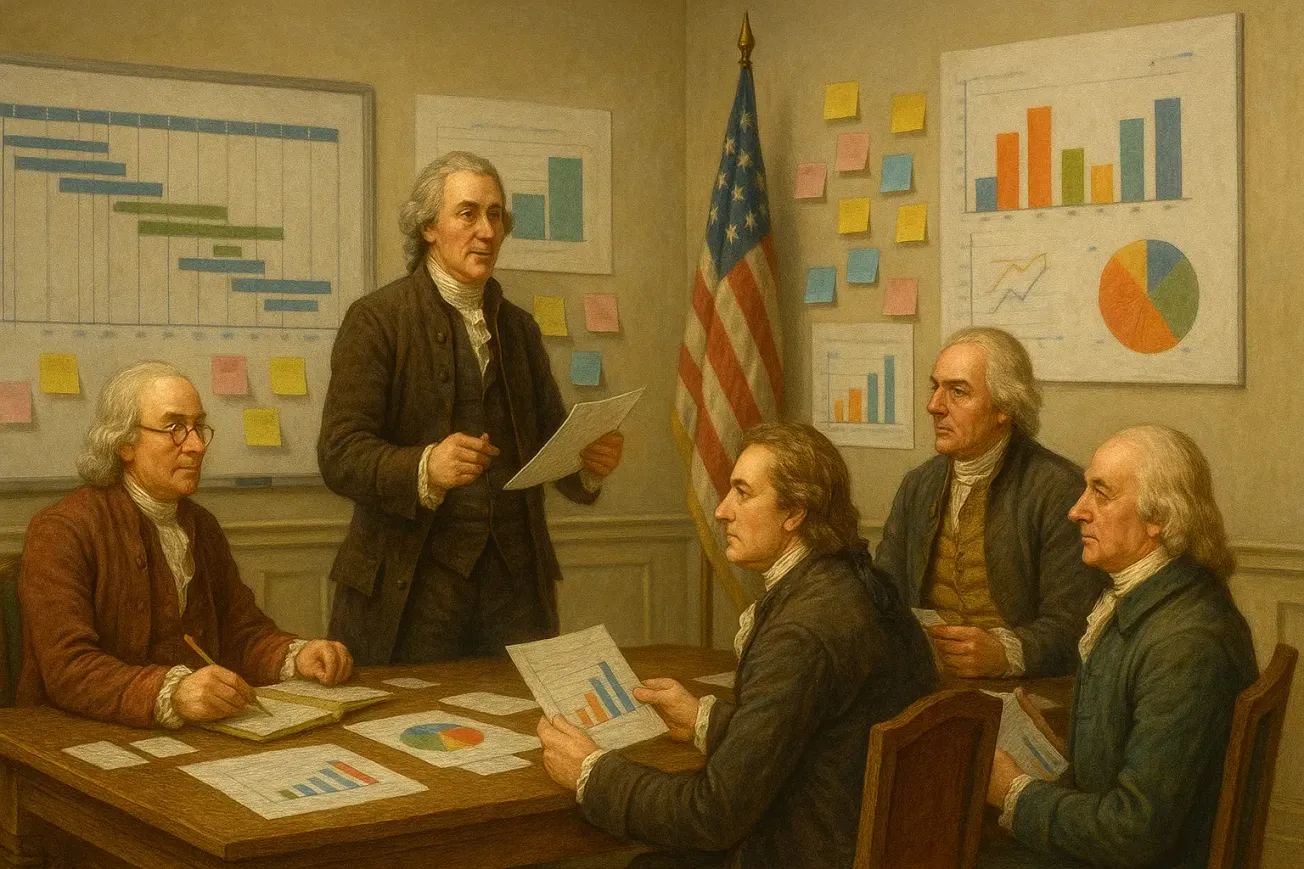The Myth of the Lone Revolutionary
The Fourth of July is synonymous with independence. With fireworks and flag-waving, we celebrate bold declarations and hard-won autonomy. But buried beneath the celebration is a truth that often gets overlooked—independence isn’t the whole story. The American Revolution was successful not because of a single visionary, but because of interdependence: alliances, coalitions, shared goals, and painful compromises.
It’s a lesson worth remembering in change work. We often romanticize the lone change agent: the scrappy reformer who overcomes all odds to deliver transformation. But sustainable change rarely happens that way. It’s not about going it alone. It’s about building a durable, functional system of dependence - on people, on processes, on trust.
Even revolutions need a support structure.
Everyone Wants Independence. Few Want Interdependence.
In modern organizations, leaders often say they want empowered teams, decentralized decision-making, and self-sufficiency. But the systems they’ve built are still rooted in hierarchy, bottlenecks, and over-functioning managers.
Change management can fall into the same trap. We launch initiatives that emphasize autonomy (“we’re giving you tools, you own the change”), but we fail to build the scaffolding that supports collective effort.
Declaring independence is just the beginning. Real transformation is the slow, deliberate work of designing new dependencies:
- Who will you rely on when resistance spikes?
- Where do you need shared decision-making rather than top-down mandates?
- What happens when local autonomy clashes with enterprise standards?
Revolutionary Coalitions, Not Solo Acts
The Founding Fathers didn’t all agree. They fought. They negotiated. They built a shared future by confronting hard truths together. That’s coalition work, and it mirrors the best of change practice:
- Executive alignment isn't just about consensus; it’s about conflict that strengthens commitment.
- Change networks aren't checkboxes; they’re distributed resilience.
- Cross-functional collaboration isn’t a nice-to-have; it’s the operating system for sustained change.
One of the most underrated capabilities in change management today is coalition-building. Not just getting names on a slide, but deeply engaging people who have divergent priorities, competing incentives, and varying levels of influence. True coalition-building requires vulnerability, compromise, and shared stakes.
If your change is still owned by one function—or one heroic leader—you’re not ready for the revolution.
Dependence Is Not a Dirty Word
In corporate settings, “dependence” often gets a bad rap. It sounds like weakness. Like a blocker. But in change, dependence is a strength—if it’s designed intentionally.
Think of:
- Stakeholder maps as webs of shared accountability, not just lists of people to “manage.”
- Governance structures as containers for productive tension, not bureaucratic red tape.
- Communications and training plans as bridges across silos, not megaphones for mandates.
Every lasting movement—organizational or historical—relies on robust systems of mutual dependence. That’s not failure. That’s design.
Rewriting the Declaration (for Change Work)
So what would your Declaration of (Change) Dependence sound like?
“We hold these truths to be self-evident: that no single leader can own change alone; that the success of any transformation depends on aligned sponsorship, cross-functional commitment, and the daily efforts of those navigating ambiguity at the front lines.”
Independence is aspirational. But interdependence is operational.
On this Fourth of July, celebrate the power of alignment. Honor the effort it takes to build real coalitions. And if you're the change agent trying to go it alone, pause and ask who’s missing from your declaration.
Final Thought
Independence may start the story, but it’s never the whole story. The best change work is built on shared vision, interlocking roles, and the hard work of cooperation. If your change initiative feels heavy, isolating, or stuck - don’t push harder. Find your coalition. Depend on it.
ChangeGuild: Power to the Practitioner™
Frequently Asked Questions
Why is this article framed around the Declaration of Independence?
Because the Fourth of July offers a perfect metaphor: we often celebrate autonomy without acknowledging that successful change is built on shared accountability, not solo heroism.
What does “dependence” mean in a change management context?
It means intentionally designing systems of trust, collaboration, and shared responsibility. Dependencies are not weaknesses—they're the scaffolding that holds change together.
Is this just about stakeholder engagement?
Not exactly. Stakeholder engagement is part of it, but this goes deeper—into governance, coalition-building, cross-functional alignment, and true shared ownership.
How do I know if I’m trying to go it alone?
If you're the only one driving, presenting, updating, or pushing the change—you're probably isolated. That’s a red flag. Look for places where others should be leading with you.
What’s one takeaway for change practitioners?
Don’t romanticize independence. Build interdependence. Change leaders aren’t lone wolves—they’re architects of coalition.
Ready to Declare Your Own Change Independence?
Change work isn’t about going it alone—it’s about building the right alliances. Subscribe to ChangeGuild.co and get access to tools, templates, and a community of practitioners who’ve got your back when the resistance comes.







